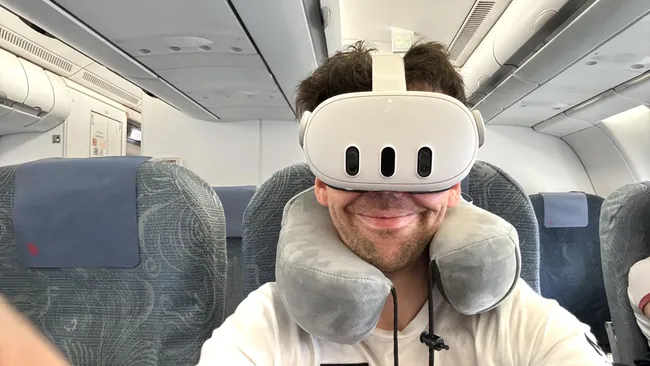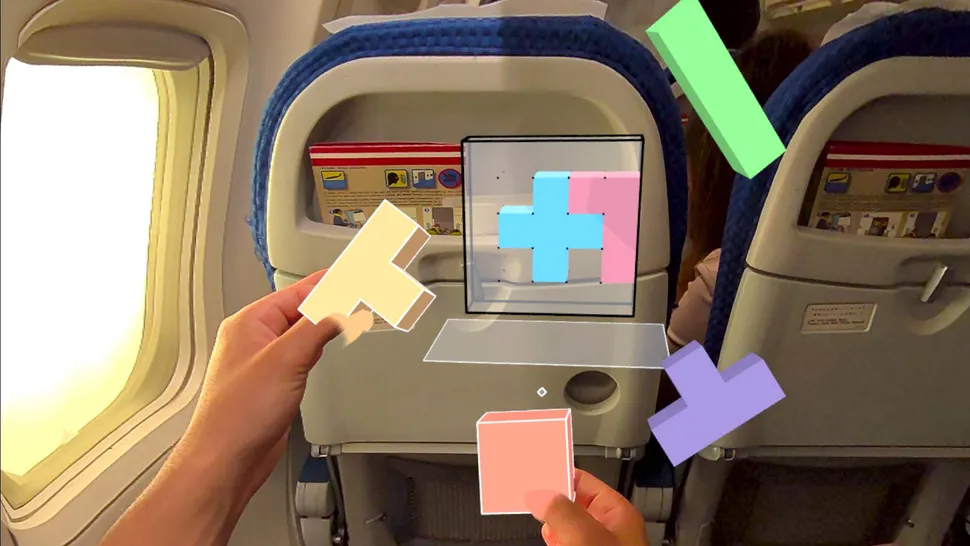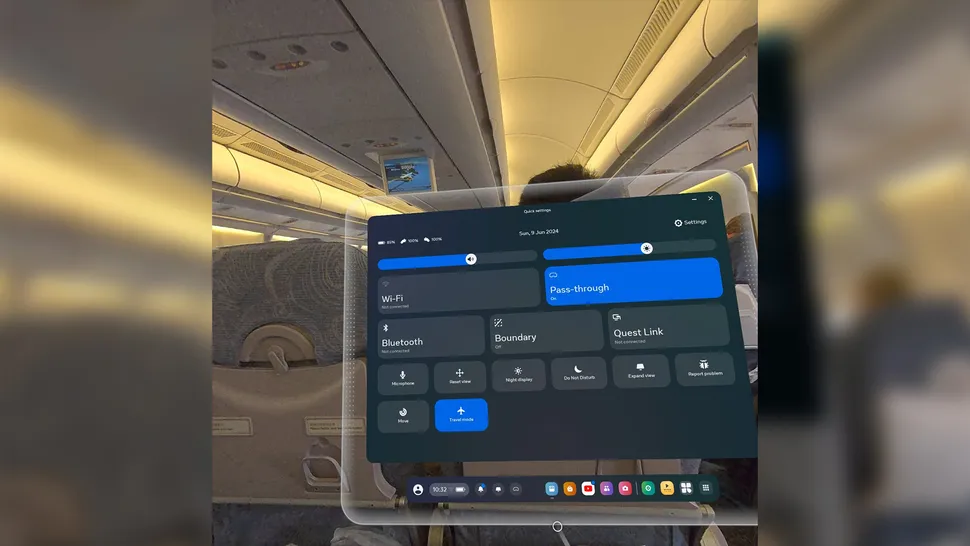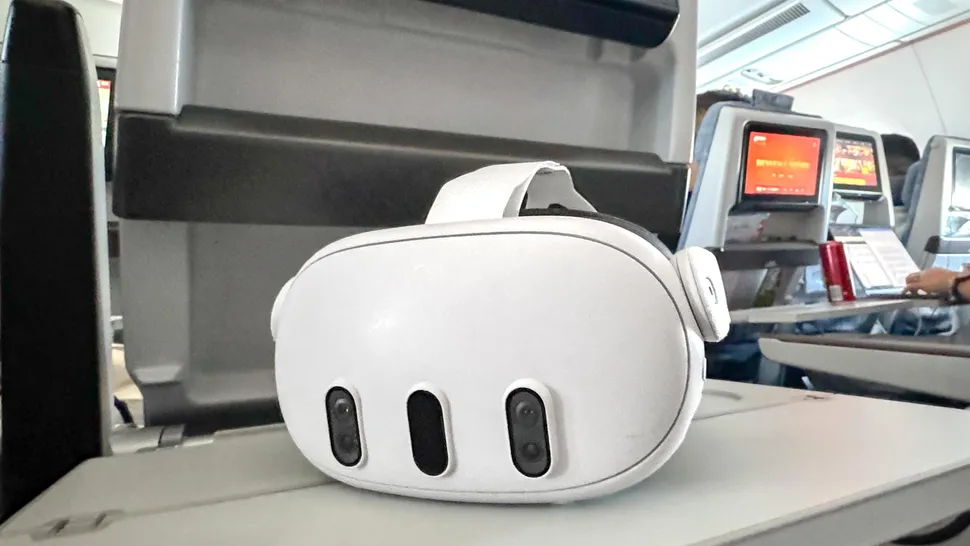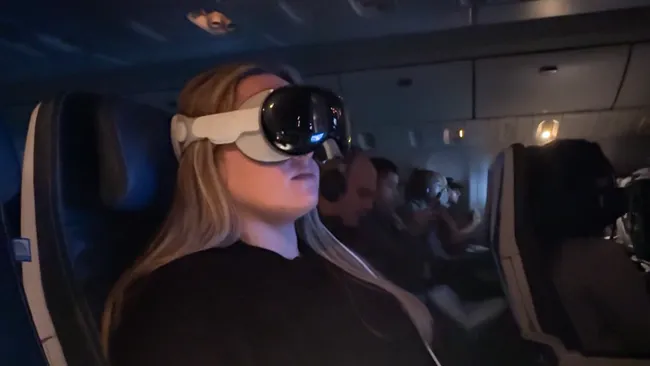Computex 2024 was easily one of my favorite shows in recent memory, although the 15-hour travel to get there was not ideal. I thought I'd done long-haul before with a 7-hour trip to New York, but this was a whole other level that I wasn't prepared for.
And chances are you're familiar with the common issues — in-flight entertainment selection stinks and looks even worse on that TFT display, looking down at the entertainment you bring onto the plane with you in a laptop or a Steam Deck causes proper neck pain, and no matter how much you distract yourself, the surroundings of being on a plane can get real dull real quick.
However, when Meta revealed Travel Mode for Quest 3 and 2, I was I'm fascinated (and suspicious) about whether it will actually be a pleasant experience. After all, I've been burned by Apple Vision Pro (more on that later), but I'm here to report that utilizing Meta's VR headset on an aircraft is a game changer for completing nearly 6,000 miles of trip in record time.
When I traveled to Costa Rica, I had the opportunity to test the Apple Vision Pro in Travel Mode, and the results were pretty mixed. My colleague Katie Kozuch had a better experience, but after considering both perspectives, I believe Meta Quest 3 is the clear victor for long-distance travel. Let me clarify.
It all started with the floating screens, which work (almost) perfectly in ideal lighting settings, but when you test it during a long-haul flight, you're frequently faced with a "Tracking error" warning message. With Quest 3, I never received an error notice, even when I attempted to mislead it by looking out of an airplane window!
Next, hand tracking is Generally good about 7 out of 10 times during my in-flight use. There were some frustrations when my pinches were not registered, and while using your hands to navigate Vision OS is already slow, imagine how much slower it would be in the bumpy confines of a plane seat.
And chances are you're familiar with the common issues — in-flight entertainment selection stinks and looks even worse on that TFT display, looking down at the entertainment you bring onto the plane with you in a laptop or a Steam Deck causes proper neck pain, and no matter how much you distract yourself, the surroundings of being on a plane can get real dull real quick.
However, when Meta revealed Travel Mode for Quest 3 and 2, I was I'm fascinated (and suspicious) about whether it will actually be a pleasant experience. After all, I've been burned by Apple Vision Pro (more on that later), but I'm here to report that utilizing Meta's VR headset on an aircraft is a game changer for completing nearly 6,000 miles of trip in record time.
What is Travel Mode?
Travel Mode, which was announced a few weeks ago, is a combination of several elements. First and foremost, it adjusts the motion tracking algorithms to handle all of an airplane's expected movements, such as turbulence. Second, when prompted, the browser will launch a window to connect to in-flight Wi-Fi. And third (which I didn't test because my bosses wouldn't let me spend business class tickets), a pilot program with Lufthansa to create a suite of mixed-reality content to consume.
How to turn on Travel Mode on Meta Quest 3 and 2?
This can be done in three steps:
- Go to Settings and scroll down to Experimental.
- Scroll down this list of experimental settings and hit the toggle next to Travel mode to turn it on
- Now you’ll find a Travel mode option inside your Quick settings panel to turn on or off at your discretion
And that’s it! Just make sure you’re running v65 of the Meta Quest software and you’ll see this option appear.
Getting around one key frustration
Before I get into this tremendous leap forward in in-flight entertainment for me, I'd want to recommend a key app — actually, it's more of a requirement for watching films and TV series, as there isn't an online store or viewer to download and watch anything offline.
Get the Skybox VR Video Player, as the $9.99 price tag is justified by the ability to play 2D and 3D video content locally in a variety of formats. And, because your computer sees your Quest 3 as an Android device when hooked in, simply download your stuff (legally, of course) and import it into the headset's file structure. I ended up bringing a couple seasons of "Silicon Valley" with me, among a few games to dabble with.
Get the Skybox VR Video Player, as the $9.99 price tag is justified by the ability to play 2D and 3D video content locally in a variety of formats. And, because your computer sees your Quest 3 as an Android device when hooked in, simply download your stuff (legally, of course) and import it into the headset's file structure. I ended up bringing a couple seasons of "Silicon Valley" with me, among a few games to dabble with.
How does this compare to Apple Vision Pro?
It all started with the floating screens, which work (almost) perfectly in ideal lighting settings, but when you test it during a long-haul flight, you're frequently faced with a "Tracking error" warning message. With Quest 3, I never received an error notice, even when I attempted to mislead it by looking out of an airplane window!
Next, hand tracking is Generally good about 7 out of 10 times during my in-flight use. There were some frustrations when my pinches were not registered, and while using your hands to navigate Vision OS is already slow, imagine how much slower it would be in the bumpy confines of a plane seat.
The mere addition of controllers has made Quest 3 infinitely faster to interact with. Even without these, hand tracking is much more stable and accurate with Meta's headset.
Finally, I made a humorous observation while attempting to access the settings to disable People Awareness. When I opened settings, I thought I was going crazy trying to find the settings screen, which turned out to be hidden under my seat. I'm not sure what it was doing down there, but Travel Mode could use some work.
Finally, I made a humorous observation while attempting to access the settings to disable People Awareness. When I opened settings, I thought I was going crazy trying to find the settings screen, which turned out to be hidden under my seat. I'm not sure what it was doing down there, but Travel Mode could use some work.
Conclusion
After a rigorous 15-hour flight test, it’s clear that the Meta Quest 3’s Travel Mode sets a new benchmark for VR headsets in the realm of air travel. Its user-friendly interface, extended battery life, and superior comfort make it an ideal companion for long-haul flights. The immersive experience provided by the Quest 3 surpasses the Apple Vision Pro, particularly in terms of ease of use and overall enjoyment during extended periods of use.
The Meta Quest 3’s Travel Mode demonstrates a thoughtful design that caters specifically to the needs of travelers. Features like easy access to entertainment, intuitive controls, and seamless connectivity ensure that users remain engaged and comfortable throughout their journey. In contrast, the Apple Vision Pro, while powerful and feature-rich, falls short in delivering the same level of convenience and sustained comfort during prolonged use.
In summary, for those seeking an unparalleled VR experience on long flights, the Meta Quest 3 with its Travel Mode emerges as the clear winner. It not only enhances the travel experience but also sets a new standard for what users can expect from VR technology in the context of air travel.
